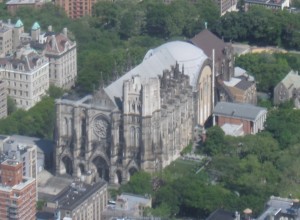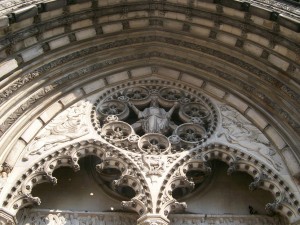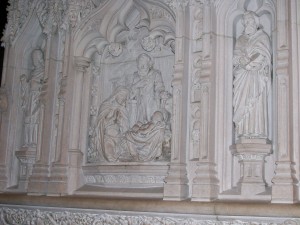Two years ago, for her sixteenth birthday, I took my daughter to New York for a bite of the Big Apple and visit some of the sites I became familiar with, as a graduate student at NYU, during the early 1970s. One of these sites is officially known as The Cathedral Church of Saint John the Divine. It is also nicknamed St. John the Unfinished! Being in the second century of its construction (started in 1892), John the Divine is following the tradition of the world’s grand churches: it might take another two or three centuries to complete the construction!
Many things contribute to this Gothic building’s remarkable qualities. One of them is the massiveness of the structure. The exterior is over 600 feet in length and 232 feet in height. The interior height of the nave is 124 feet! It ranks as the fourth largest Christian church building in the world.
Throughout history, the building of churches like these served as the training ground for generations of craftsmen, from stone masons/carvers, architects, carpenters, to many other trades. Not every generation carried the same level of commitment as the past generation. World events such as wars, famine, disease or other calamities also slowed down the construction process. What is it that prevented these buildings from remaining unfinished messes (some of these buildings took 4 or 5 hundred years to complete.)? I believe that the answer can be found in what follows.
In December of 2001, there was a fire that destroyed a portion of the building. The building was under restoration for many years and reopened in late 2008. A blessing from this fire was that it made necessary the cleaning of the interior stone elements of the building, which restored the pristine quality of the stone carvings.
In the back of the church, there are several chapels. Each one is made of stone carvings, each one more magnificent than the other. After going through these chapels, the words that came to me were: “ These people were so grateful to God, for being here in America, that they wanted to express their gratitude through their carvings.” In doing the research for this blog, I discovered that these seven chapels are actually known as the “Chapels of the Tongues”. They are nationalistic chapels, each representing the seven most prominent ethnic groups who immigrated to New York, upon the opening of Ellis Island in 1892. That fortunate discovery helps to make the case that great craftsmanship transcends time and touches people, generation upon generations, in a way that inspires them to carry on the work started by past generations and finish up those great structures, even if it takes centuries!










 Follow
Follow
